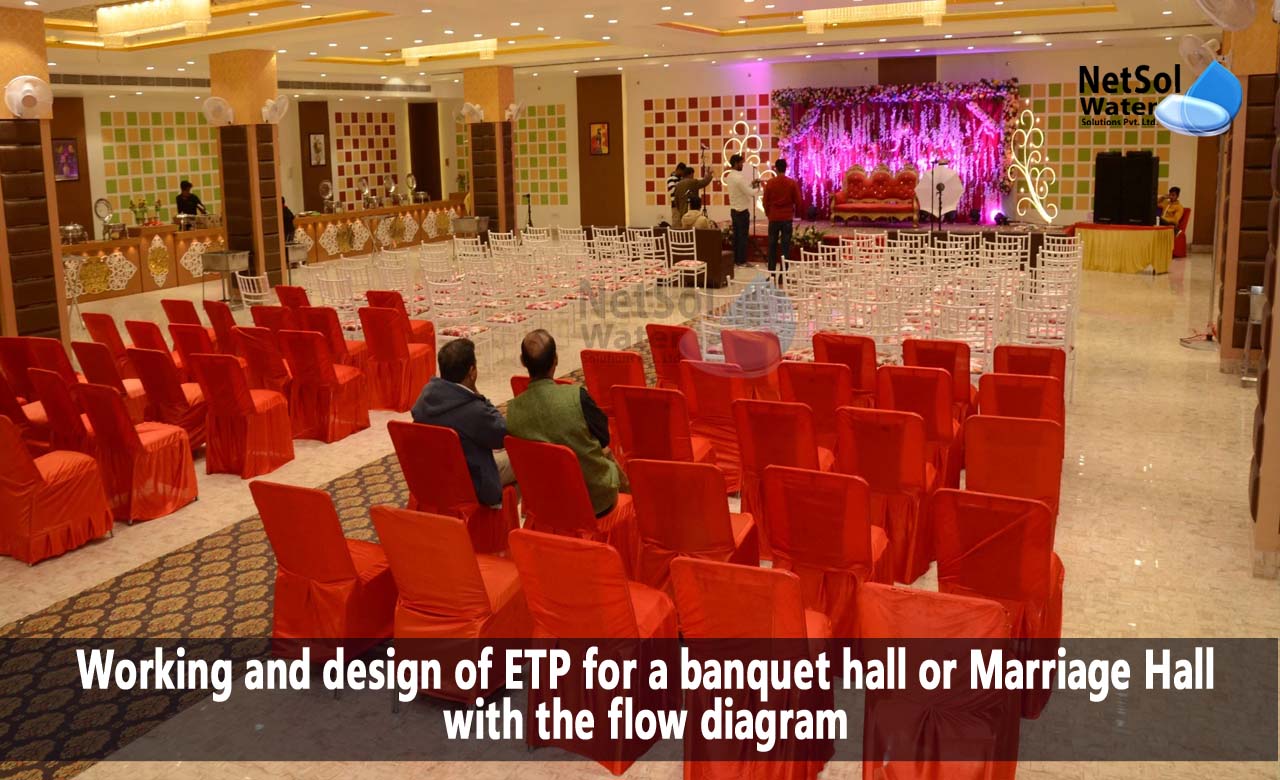Working and design of ETP for a banquet hall or Marriage Hall
Effluent treatment plant, also known as ETP is a wastewater treatment process (WWTP) that is used for treating wastewater. It is primarily utilized in sectors like medicines, textiles, and chemicals where there is a risk of severe water contamination. Domestic sewage and commercial wastewater are both treated in large part by effluent treatment plants. In the wastewater treatment process of an ETP plant, organic matter, inorganic matter, heavy metals, oil & grease, suspended particles, and other impurities are treated. There are different kinds of wastewater treatment plants, including chemical, biological, combined chemical and biological, and thermal.
In this blog, we will discuss in detail the working and design considerations of ETP for banquet hall.
Causes of waste at marriage hall:
1. Food waste: Whether it is during the serving, preparation, or cleanup process, food waste at weddings is all too typical. Numerous factors could be at play in this wastage, therefore it's critical to track and quantify it. Not just the main course though; you also need to consider food waste from evening meals, wedding cake, and welcome snacks.
2. Decorations: It's crucial to match the wedding venue's aesthetic, which frequently entails adding more embellishments. Couples frequently buy decorations without really considering what would happen to them after the wedding. Numerous things are single use, which can produce a lot of garbage.
3. Paper products: A wedding can produce a lot of paper waste, from invitations to menus, place cards, and orders of service.
4. Single-use items: Weddings frequently use disposable plates, cups, silverware, and napkins, which results in a substantial quantity of trash.
5. Flowers: A lot of flower arrangements are used in weddings, including bouquets, buttonholes, centerpieces, and arrangements during the ceremony. It's not unusual for flower arrangements to be utilised for one aspect of a wedding, and depending on how they are made, they may be readily compostable or may wind up in the trash.
6. Transportation: When people travel alone, carbon emissions and waste are increased as guests and vendors make their way to the wedding location.
7. Lighting: Lights must be on when people are in the room, but they are rarely turned off in public spaces when no one is there, which can result in unnecessary waste and additional energy use.
Working of ETP for banquet hall:
Wastewater generated from numerous sources and locations through septic tanks, grease separating tanks will be collected and led to the centralised wastewater treatment system of the restaurant.
Aeration tank: In order to stabilise the biological treatment facilities in the back, conditioning tanks are utilised to control the flow and concentration of wastewater entering the system. Wastewater is batch-pumped from the regulating tank to the SBR biological tank.
Biological tank SBR: SBR tanks will carry out the processes of carbon reduction, nitrification, denitrification, and biological phosphor reduction because oxygen may be added to the tank to control aerobic, anaerobic, and anaerobic processes.
Pressure filter tank: water after being deposited in SBR tank will be transferred to an intermediate tank, from here pumped to a pressure filter tank to remove any debris remaining in the wastewater.
Wastewater is moved to a disinfection tank after passing through a filter tank.
Disinfection tank: Before being released into the environment, wastewater is treated in the disinfection tank by adding Chlorine or Javen solution at a specific quantity to kill any Coliform bacteria present.

Process flow diagram of ETP for banquet hall
Do you need an advice or assistance on selecting the best water and waste water treatment unit? We have solutions for all your problems!
Let us now your problem, our experts will make sure that it goes away.
For an assistance or related query,
Call on +91-965-060-8473
Or write us at enquiry@netsolwater.com



